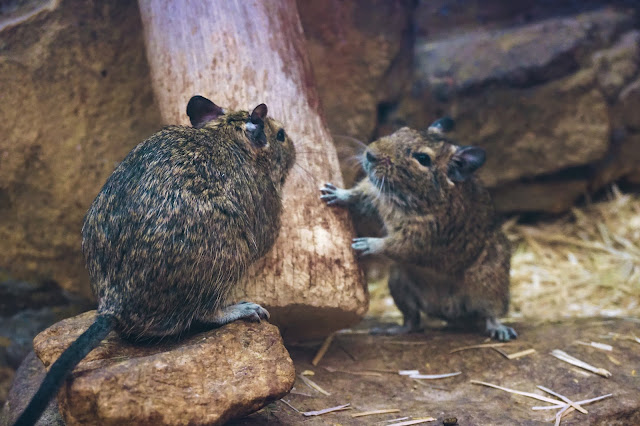The Latest Neuroscience Breakthrough? It's Inside a Mouse's Skull
How much of our social behavior is hard-wired and how much is learned? It’s a huge question. The nature vs nurture debate has raged for centuries, and while most people today would argue that our actions are shaped by at least a little of both, it’s difficult to analyze social interactions scientifically. There are a thousand nuances at play in any conversation, impossible to replicate in a lab environment.
If you’re looking for clean data, it’s a lot easier to study an animal with simpler social dynamics, like mice. And as it happens, exciting things are happening in the field of neurochemical rodent behavioral analysis.
“We’re starting to get a sense of what happens between the part of the brain that takes in sensory information and the part that produces behavior,” explains David Anderson of the California Institute of Technology.
Comparing a mouse’s neuron firing patterns to its real-time actions can provide some important clues to the machinery of what we call “instinct.” If the cell activity seems to trigger actions, this suggests hard-wiring, while if certain external interactions spawn lasting changes in how the cells behave, that implies a kind of learning.
So how do you gather that kind of feedback? After all, you can’t exactly build a bunch of itty-bitty fMRI machines and scan the mice while asking them survey questions. Luckily, scientists have recently hit upon an interesting method of studying the interaction between brain chemistry and social behavior.
First, they specially bred the mice to contain a protein in their tiny little brain cells which lights up whenever a given brain cell is active. Next, these determined researchers mounted a microscope on every mouse’s head (presumably a very very small one). Instead of a more traditional microscope lens, a thin glass rod was implanted in each mouse’s amygdala. The result? Beyond just testing the fine motor skills of their team, the scientists now had a way to record a subject’s neuron activity while observing the subjects reacting to social situations.
It’s worth noting, of course, that mouse social dynamics are extremely different than ours. The main factor that determines if two mice meeting for the first time will mate or fight is biological sex. Generally speaking, two males or two females will get aggressive with each other, while a mixed-gender pair will attempt to make more mice. Clearly, it’s crucial for mice to determine each other’s sex as quickly as possible. They do this by smelling each other.
Watching the mice sniff each other, Catherine Dulac of Harvard University reports that her team found something pretty interesting: after the first time a mouse mates, that specimen is significantly better at quickly detecting other future potential partners. Its ability to smell an opposite-sex mouse has greatly increased. In other words, the mice seem to better learn how to perform a task we used to consider automatic, inborn.
“It was surprising to see patterns of brain activity thought to be instinctively activated by odor actually change with experience – and stay changed for over a month,” says Dulac.
So at least as far as mice go, nature and nurture both appear to be in play, even concerning some of the most fundamental rodent behaviors. Maybe someday we’ll be able to adapt these new brain imagery techniques to fit our own skulls, with scientists finding a way to implant a more sophisticated form of that glass rod-shaped magnifying lens in our amygdalas. In the meantime, keep an eye out for people with tiny microscopes coming out of their heads.




Comments
Post a Comment